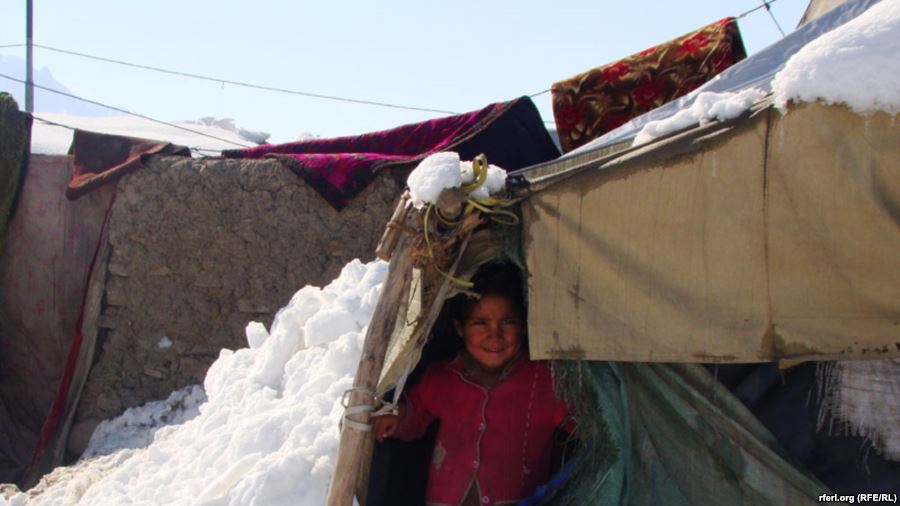The condition of the Internally Displaced Peoples (IDPs) in Afghanistan
Based on the report of the UN Organization for Coordination of Humanitarian Assistance (OCHA), from the beginning of 2018 until 19 February, more than 17000 Afghans are displaced inside Afghanistan. [1]
In its recent report, this UN organ has said the insecurity and the continuation of war in the country as the main reasons behind the intensified IDP situation in Afghanistan. Besides the war, natural disasters, worst economic condition, poverty and unemployment and lack of investments in infrastructural areas are other factors that have played a role in displacing the people in the country.
Here you would read about the situation of the IDPs in Afghanistan and the policies of the National Unity Government (NUG) to address this issue.
IDPs and their human rights
IDP is someone who is forced to leave his/her residence due to armed conflict, natural disasters, poverty, etc. These people usually lose their belongings and have problems in areas of livelihood, shelter, education, job opportunities, etc.
Considering their human dignity and rights, governments are committed to certain obligations and responsibilities towards them. The first principle of the UN regulation regarding IDPs states: “IDPs shall have all the rights and freedoms that other citizens of a country have on the basis of national and international laws. IDPs shall not be discriminated in benefiting from their rights and freedoms.”[2]
In the meanwhile, the International Declaration of Human Rights states: “Everyone has the right to maintain the level of live, health and prosperity of himself and his family in areas of food, shelter, healthcare and required social services. In addition, everyone has the right to have a dignified livelihood while he loses the means of livelihood due to unemployment, illness, being aged, widow, and any other factor out of his will.” [3]
IDPs in Afghanistan
In 1990s, many Afghans were living in cities, far from their homes, due to the civil war in the country. After 2001 and with the beginning of the US and NATO attacks on various regions of Afghanistan, the number of IDPs increased to 1.2 million people in Afghanistan. However, when security was maintained in the country, this number reduced to 650 thousand people.
Between 2001 and 2006, when the IDP situation was getting better, the number of IDPs was also decreasing. Nevertheless, after 2007, with the increasing insecurity in some provinces of the country, the number of IDPs increased as well. In this year, there were 153718 IDPs in Afghanistan. However, this number increased to 916435 in 2015 and in 2016, the number of IDPs increased to 1.5 million. [4]
Due to the worst security situation in the past year, the number of IDPs was rising and based on the remarks of the officials in the Ministry of Refugees and Repatriations, only in 2017, 600 thousand Afghans are displaced due to the war in the country.
In the current year (2018), the reports of the international organizations show a high number of IDPs in the country and considering the worst security situation in the beginning of this year, it seems that the number of IDPs will continue to rise in this year as well. Overall, the reasons behind the increase in the number of IDPs is the increasing insecurity, armed conflict, unemployment and poverty and natural disasters.
NUG’s Strategy towards IDPs
Although the Afghan government has some plans for IDPs, the situation on the ground shows that IDPs live in worst conditions and the government has failed to address their condition.
Based on the “National Development Strategy of Afghanistan”, several organs are responsible in addressing the condition of IDPs. Some part of this strategy states: “In order to address the issues of returnees and IDPs, the government must work in promoting the capacity of the relevant ministries including Ministry of Refugees and Repatriations, Ministry of Foreign Affairs, Ministry of Urban Development, Ministry of Public Health, Ministry of Education, etc.” [5]
“The National Policy of IDPs”, approved by the Ministers’ Council on 25 November 2013 and officially implementable as of February 2014, is another document that is prepared by the Afghan government to address the IDPs situation in the country. [6]
In its 2016 report, Amnesty International has expressed concern about the bad situation of IDPs and has written that the National Policy of IDPs is yet to be implemented properly and that there are many challenges in this regard.
Although the Afghan Government and some national and international organizations are providing assistance such as food and basic live tools, these aids are, on the one hand, very less and, on the other hand, is not a fundamental aids that can help IDPs become self-sufficient.
The Afghan Government and the international community have not paid attention to the fundamental needs of IDPs. Most of them are living in tents and their children not only do not have access to education but also beg on the streets to feed their families.
Overall, as any other issue in Afghanistan, this issue is also related to peace and stability in the country and as long as the war continues the NUG will not be able to bring any fundamental changes in the lives of the IDPs.
The End
[1] See it online:
[2] Read more here:
http://morr.gov.af/Content/Media/Documents/IDPGP_Dari_Final21720121014149591458322570.pdf
[3] For more information click on the link bellow:
http://www.aihrc.org.af/media/files/Laws/Elamia%20ha/Elamiya%20huquqe%20bashar.pdf
[4] CSRS, “A glimpse into the situation of IDPs in 2017”, 28 Asad 1396 [solar year]:
https://csrskabul.com/pa/?p=3728
[5] The National Development Strategy of Afghanistan: “The refugees, returnees and IDPs strategy”:
http://morr.gov.af/Content/Media/Documents/DariRefugeeStrategy_final1992011829118381458322570.pdf
[6] Ministry of Refugees and Repatriations, “National Policy of IDPs”:
http://morr.gov.af/Content/Media/Documents/NationalIDPPolicy-FINAL-Dari26201484817936553325325.pdf

